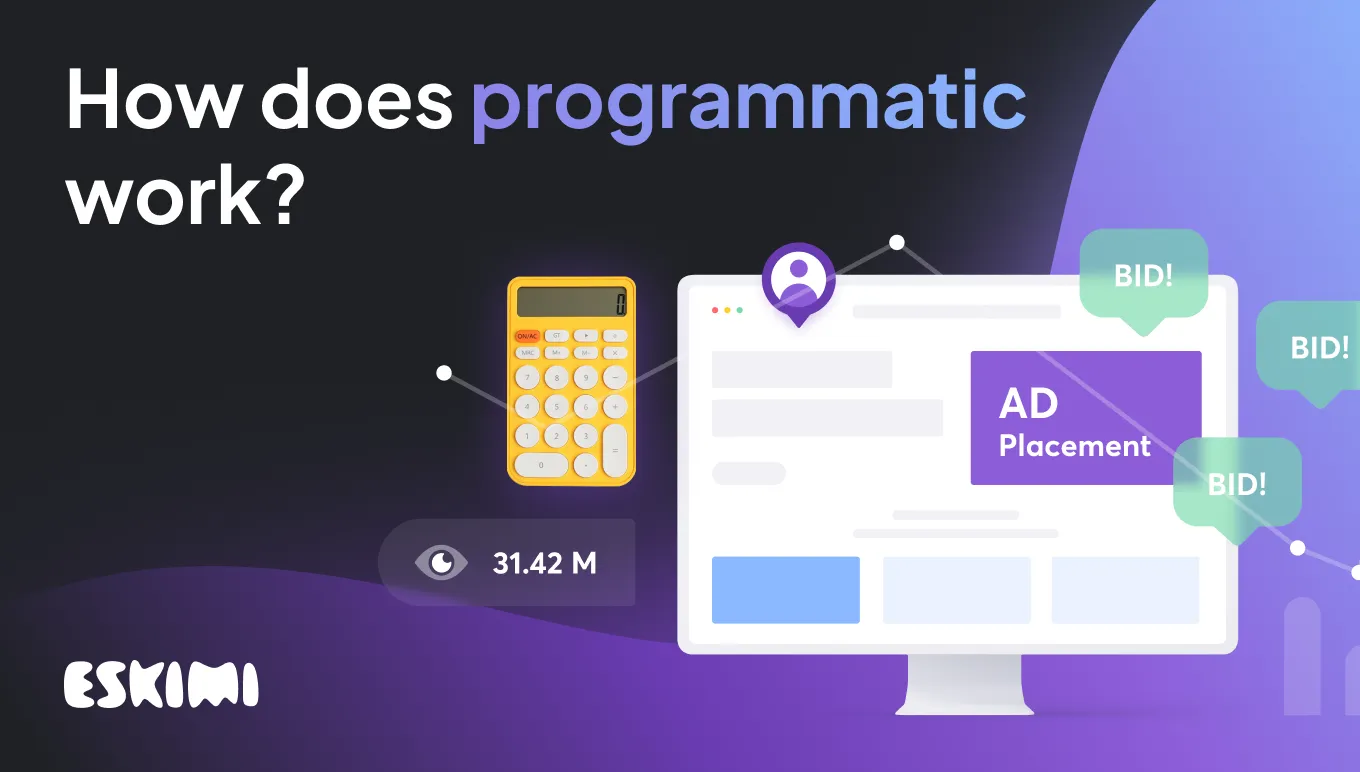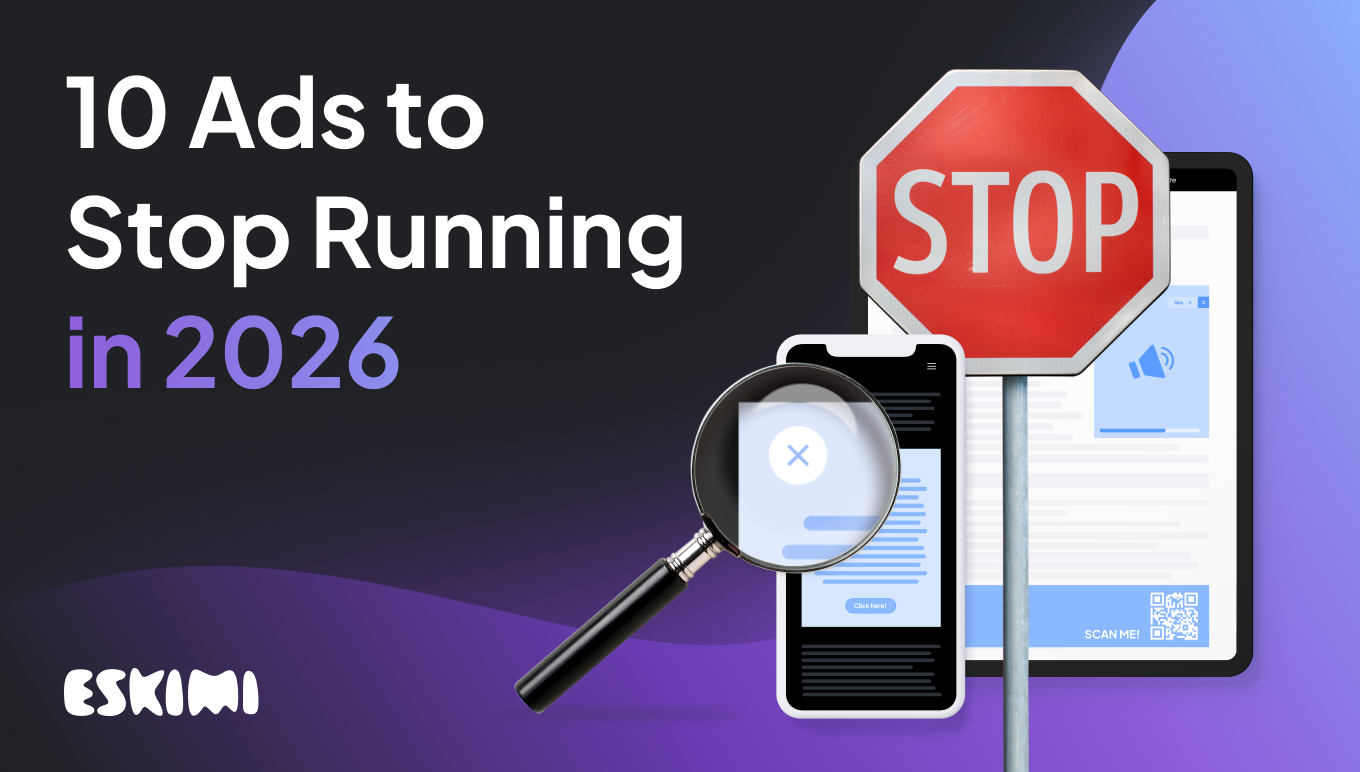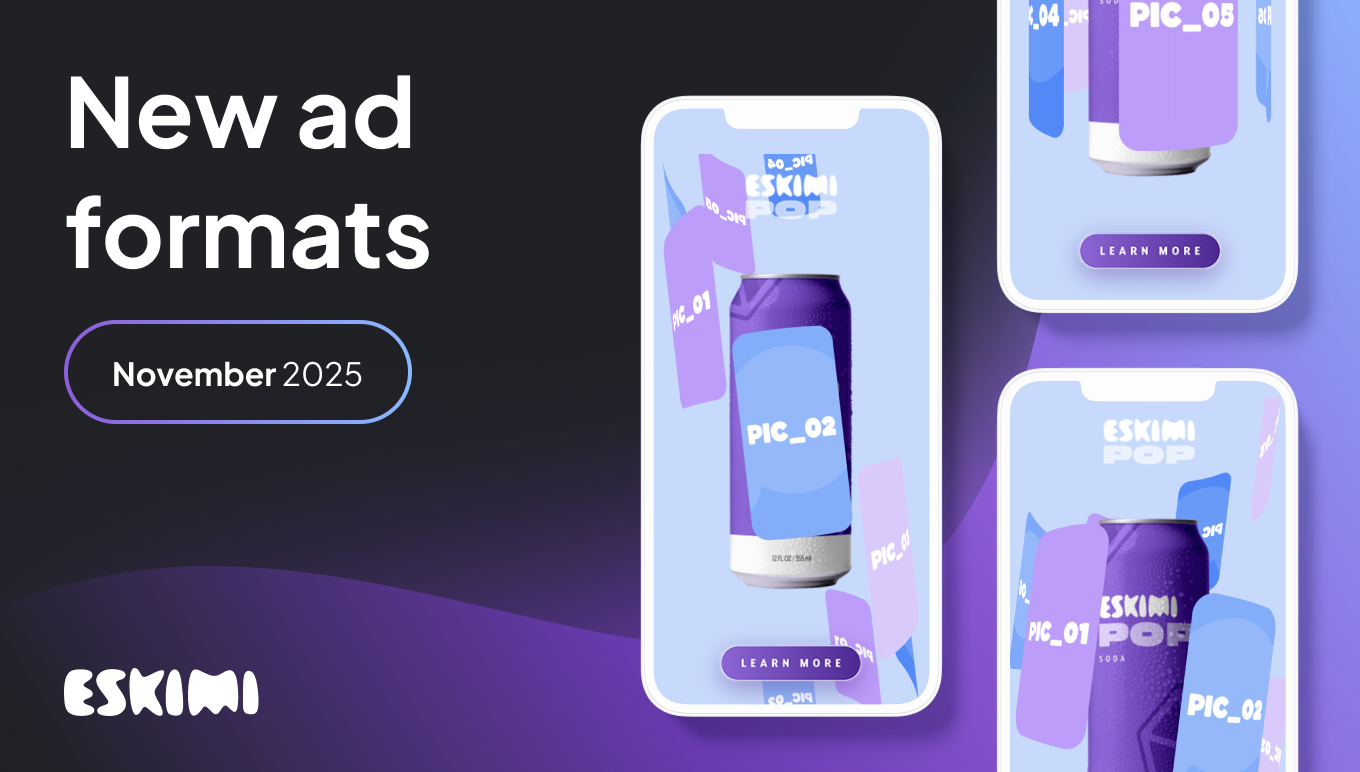How Does Programmatic Advertising Work?

Advertising online has become essential in today’s hyper-connected digital landscape. People now communicate, shop, learn, and entertain themselves in virtual environments, leaving brands no choice but to keep catching up.
One of the ways to do it is programmatic advertising which emerged as a way for advertisers to efficiently and effectively reach and engage their target audiences. With its ability to automate the ad buying process and optimize campaign performance, programmatic has captured the attention of marketers worldwide.
But how exactly does programmatic advertising work?
In this blog post, we’ll unravel the inner workings of this complex ecosystem, shedding light on the main participants, tools, and processes that contribute to its success.
What is programmatic advertising?
Programmatic advertising is an automated process of buying and selling ad inventory in real-time, enabled by sophisticated algorithms.
It leverages vast amounts of data, ranging from user demographics and behavior to contextual factors, and analyzes many different user signals to deliver highly targeted and personalized ads across multiple platforms and channels.
Key players in the programmatic ecosystem

To understand how programmatic works, it’s important to get to know its key players and the tools they use to be able to participate in the programmatic advertising ecosystem.
Put simply, the core idea of programmatic is to easily connect advertisers and publishers, helping them achieve their goals more efficiently.
- Advertisers can be brands, agencies, or individuals who want to promote their products or services through programmatic advertising. They have their campaign objectives, target audience, a vision for specific advertising channels, and ad creatives that they want to use.
- Publishers are media owners, e.g., owners of websites, mobile apps, or other digital platforms where ads are displayed. They provide ad inventory and make it available for programmatic buying.
To communicate, advertisers and publishers use programmatic platforms such as DSP and SSP that help facilitate media buying and selling.
Demand-side platforms
Demand-side platforms, or DSPs, are platforms used by the buying side – advertisers – to purchase ad inventory from multiple sources, launch, manage, and optimize programmatic ad campaigns.
Using a DSP, advertisers can set various targeting parameters, manage budgets, and bid on ad impressions across multiple ad exchanges.

DSPs often provide opportunities to lower ad costs, improve work efficiency (and the negotiation process between advertisers and publishers is automated), give access to broad ad inventory selection, and can benefit advertisers by enabling them to see their ad performance in one centralized place.
Supply-side platforms
Supply-side platforms, or SSPs, are platforms that publishers use to manage their ad inventory and maximize revenue by offering their available ad slots to advertisers.
Thanks to SSPs, publishers can connect to ad exchanges and auction their available ad slots.

A few of the biggest benefits that SSPs offer for publishers are an automated ad selling process, the ability to connect to multiple networks (increasing the chances to fill more ad slots), effective inventory and price floor management, and frequency capping – meaning that SSPs can limit how often a specific or similar ad can be shown to the same visitor.
Data management platforms
Another important element in the programmatic ecosystem is a data management platform, also called DMP. DMPs are used to collect, store, analyze, and activate data about users and their online behavior from various sources around the internet.
Put simply, DMPs help advertisers and publishers segment audiences, create their profiles, and target specific user segments with relevant ads.

Overall, using a DMP can help you make more informed decisions and better optimize advertising campaigns, thus driving better results. Often, they are integrated within DSPs and SSPs but can also be used separately.
Ad exchanges
Ad exchanges act as intermediaries between advertisers and publishers. It’s a digital marketplace where publishers can offer their available ad slots and advertisers can bid and purchase ad inventory. It’s also where real-time auctions for ad impressions happen (more on that later).
Ad exchanges are driven by a demand and supply mechanism – advertisers want to buy ad inventory and bid on the available slots, while publishers sell their available ad space to the highest bidders.
Ways to launch programmatic ad campaigns
As opposed to some other advertising channels, for instance, social media, programmatic offers several different options to launch ad campaigns.
The choice typically depends on several factors, including:
- Campaign goals – different types of programmatic offer different levels of control, targeting options, inventory access, etc.
- Target audience and reach – some programmatic advertising types can be more suitable for reaching specific audience segments or applying precise targeting than others.
- Budget – pricing typically varies between different programmatic options, and that can be influenced by several factors (e.g., RTB is typically more cost-effective than programmatic direct deals as they deal with negotiated fixed prices).
- Inventory quality – programmatic advertising offers different levels of control and transparency regarding ad inventory.
- Campaign scale and time can impact the choice of programmatic type since different deals require different amounts of time for negotiations and planning.
Open RTB

Open RTB, also known as Real-Time Bidding or open auction, is one of the most commonly used types of programmatic advertising. Because of its popularity, people sometimes even use it as a synonym to describe programmatic in general.
As the name suggests, Open RTB works on an auction basis. “Open” means that it is accessible to the public, meaning that any advertiser and publisher can participate in the “competition” for ad impressions.
In an Open RTB, the final cost of the ad slot is determined by demand – the highest bid wins the auction, and the ad is displayed on the publisher’s website.
Private Marketplace (PMP)

Private Marketplace, or PMP, is another programmatic type that works on an auction basis. Using PMP deals, advertisers also get a chance to bid on ad impressions in real-time, and the highest bidder wins the placement.
So what’s the difference between Open RTB and PMP, then?
While Open RTB auctions are open for everyone, PMPs can be accessed only with an invitation from publishers. Private Marketplaces allow publishers to offer premium inventory to exclusive partners that meet specific requirements.
In PMPs, the bidding starts once publishers set the floor price.
Programmatic Guaranteed

Programmatic Guaranteed is one of the programmatic direct deals that doesn’t follow the bidding process like the previously mentioned Open RTB and PMP.
Instead, Programmatic Guaranteed enables advertisers to negotiate the price for ad placements directly with publishers. Once they agree on a fixed price (CPM) and a certain number of impressions that have to be delivered, the ad inventory is designated for that particular buyer and they have to buy it.
Since both sides need to negotiate prices and other relevant aspects of the ad campaign, this type of programmatic is the closest to traditional media buying. However, it’s still a “programmatic way” to buy and sell ads that leverages automation and reduces the amount of manual work.
Preferred Deals

Like Programmatic Guaranteed, Preferred Deals also involve direct negotiations between advertisers and publishers. They also have to agree on a fixed price, yet the difference here is that advertisers are not obliged to buy the ad inventory they’ve agreed upon.
Put simply, they get a “sneak peek” into an ad slot (or priority to bid) before they become available on Open RTB or PMP, but they still can deny the placement. If denied, the publisher can sell it in open or private auctions.
How ads get displayed?
So as you can understand, the steps of launching a programmatic ad campaign can vary depending on your chosen programmatic type. Each process involves multiple layers and technologies working together to deliver targeted ads to users in real-time.
To better understand the principles of how programmatic advertising works, let’s analyze the processes happening within Open RTB boundaries.

The process of buying ad placements via Open RTB consists of five steps:
- The user visits a website.
- Information about this specific user is then added to a DMP (Data Management Platform that collects and stores user information). DSP, which is connected to DMP, sends it to the ad exchange/SSP.
- SSP receives available ad placements from publishers and sends them directly to the ad exchange or DSPs.
- DSP bids on the ad request in real time based on pre-set criteria.
- The highest bid wins the ad placement, and the ad is displayed.
For the publishing side, the process is similar, it’s just that it serves a different purpose (to sell and ad slot, not to buy).
A publisher with available ad space communicates with an SSP to list it on an ad exchange or send information directly to DSPs. After this, you already know what happens – DSPs bid on listed ad spaces for advertisers in real-time, and the highest bid wins the ad placement.
How are ad prices determined?
It’s difficult to put programmatic ads into some specific price frame as the cost of programmatic campaigns may also vary depending on different factors.
Some of them include:
- Demand and supply situation
- The geographic area of the publisher concerned
- Time of the year (e.g., advertising demand before Christmas is higher, therefore, more advertisers compete for ad inventory = ads cost more)
- Quality of inventory
- Targeting options (the more specific you want to be, the higher the price)
- Advertising channel (display, video, CTV, in-game, etc.)
- Even the device used by a given visitor
Typically, programmatic deals are priced on a CPM (Cost Per Mille) basis, which defines the cost of an ad per 1,000 ad impressions. On average, it can vary around $0.50 to $2 CPM.
To help you get a better idea of programmatic fees, you can check this IAB Programmatic Fee Transparency Calculator.
Is programmatic advertising effective?
In short, yes – programmatic advertising is effective.
Automated technology and algorithms used in programmatic enable advertisers to improve their campaign (and work) efficiency, saving time they can spend on other important things, like campaign optimization for the best results.
Programmatic is also a highly data-driven advertising method. Data collected for programmatic is used to deliver highly targeted ads to audience segments based on a wide range of parameters.
Since it’s not guesses or assumptions but actual user behavior data (or any other information like demographics, interests, etc.), advertisers can craft ads that their audience finds more relevant and appealing, increasing the chances of positive outcomes for the brand.
Finally, thanks to its targeting capabilities, real-time optimization, and efficiency gains, programmatic often deliver higher ROI compared to more traditional advertising methods.
Anything else you want to know about programmatic?
At its core, programmatic advertising is indeed a complex process that takes time to understand and tame.
The good news is that neither advertisers nor publishers have to do it alone since there are plenty of trustworthy programmatic advertising platforms and companies that can share their expertise, provide help and guidelines that can bring you closer to achieving your goals.
If you’re new in the space or looking for a change, contact the Eskimi team or book a demo, and let’s launch your next programmatic ad campaign together.
Level Up Your Advertising with Eskimi
- Reach 96% of Open Web
- 2,500+ Targeting Options
- 100% Managed or Self-Service
- In-House Creative Studio Team
- Display, Video, In-Game & CTV
- #1 Rated DSP on G2




.png)